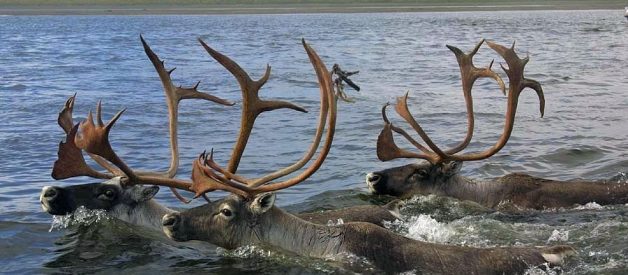by Bill O?Brian, U.S. Fish and Wildlife Service
Majestic moose. Elegant elk. Regal deer. What makes them so memorable? Antlers! National wildlife refuges are home to thousands of antlered animals. With the holiday season approaching, we bring you 11 facts about antlers.
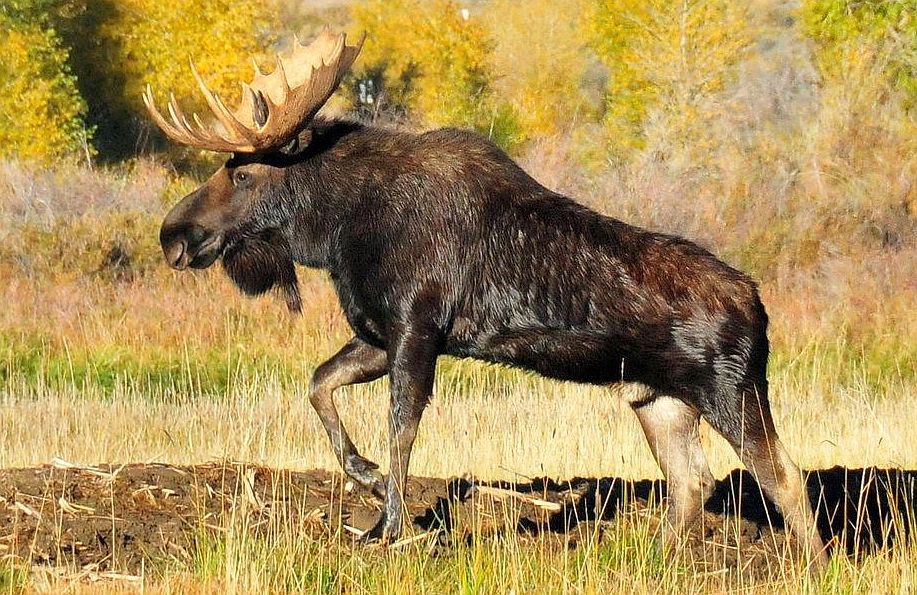 Bull moose at Seedskadee National Wildlife Refuge in Wyoming. Photo by Tom Koerner / USFWS.
Bull moose at Seedskadee National Wildlife Refuge in Wyoming. Photo by Tom Koerner / USFWS.
Fact #1 Adult male elk, caribou, moose, white-tailed deer and mule deer ? all native to North America ? have antlers. Most female caribou have antlers, too. They all belong to the Cervidae family of mammals.
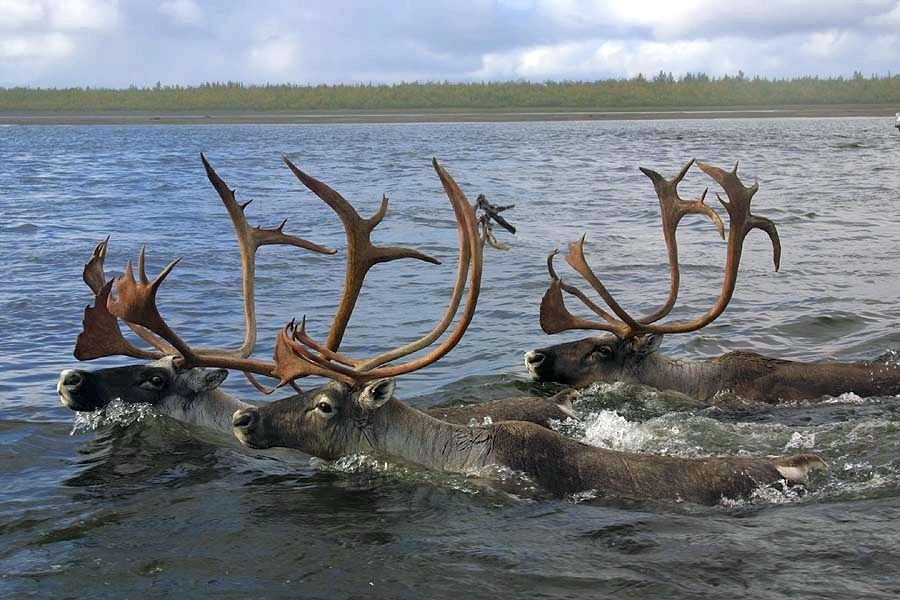 Three bull caribou navigate the Kobuk River at Selawik National Wildlife Refuge in Alaska. Photo by USFWS.
Three bull caribou navigate the Kobuk River at Selawik National Wildlife Refuge in Alaska. Photo by USFWS.
Fact #2 There are four subspecies of elk in North America: Roosevelt, Rocky Mountain, Tule and Manitoban. Roosevelt elk, the largest subspecies, are found in the Northwest, generally west of Interstate 5, including at: Willapa and Julia Butler Hansen Refuges in Washington and Nestucca Bay, William L. Finley and Bandon Marsh Refuges in Oregon. Tule elk live in California, including at San Luis and Bitter Creek Refuges. Caribou (also known as reindeer) are found at many of Alaska?s 16 national wildlife refuges.
 Tule elk forages at San Luis National Wildlife Refuge in central California. Photo: Doug Ridgway.
Tule elk forages at San Luis National Wildlife Refuge in central California. Photo: Doug Ridgway.
Fact #3: National Elk Refuge might just be the antler capital of United States. Some 5,000?7,000 Rocky Mountain elk winter annually at the refuge near Jackson, Wyoming. In winter, the refuge offers horse-drawn sleigh rides that take you among the elk. Frequently asked questions about the National Elk Refuge herd.
 Thousands of Rocky Mountain elk spend each winter at National Elk Refuge in Wyoming. Photo: Lori Iverson / USFWS.
Thousands of Rocky Mountain elk spend each winter at National Elk Refuge in Wyoming. Photo: Lori Iverson / USFWS.
Fact #4: Antlers can grow up to an inch per day, among the fastest-growing animal tissue on the planet.
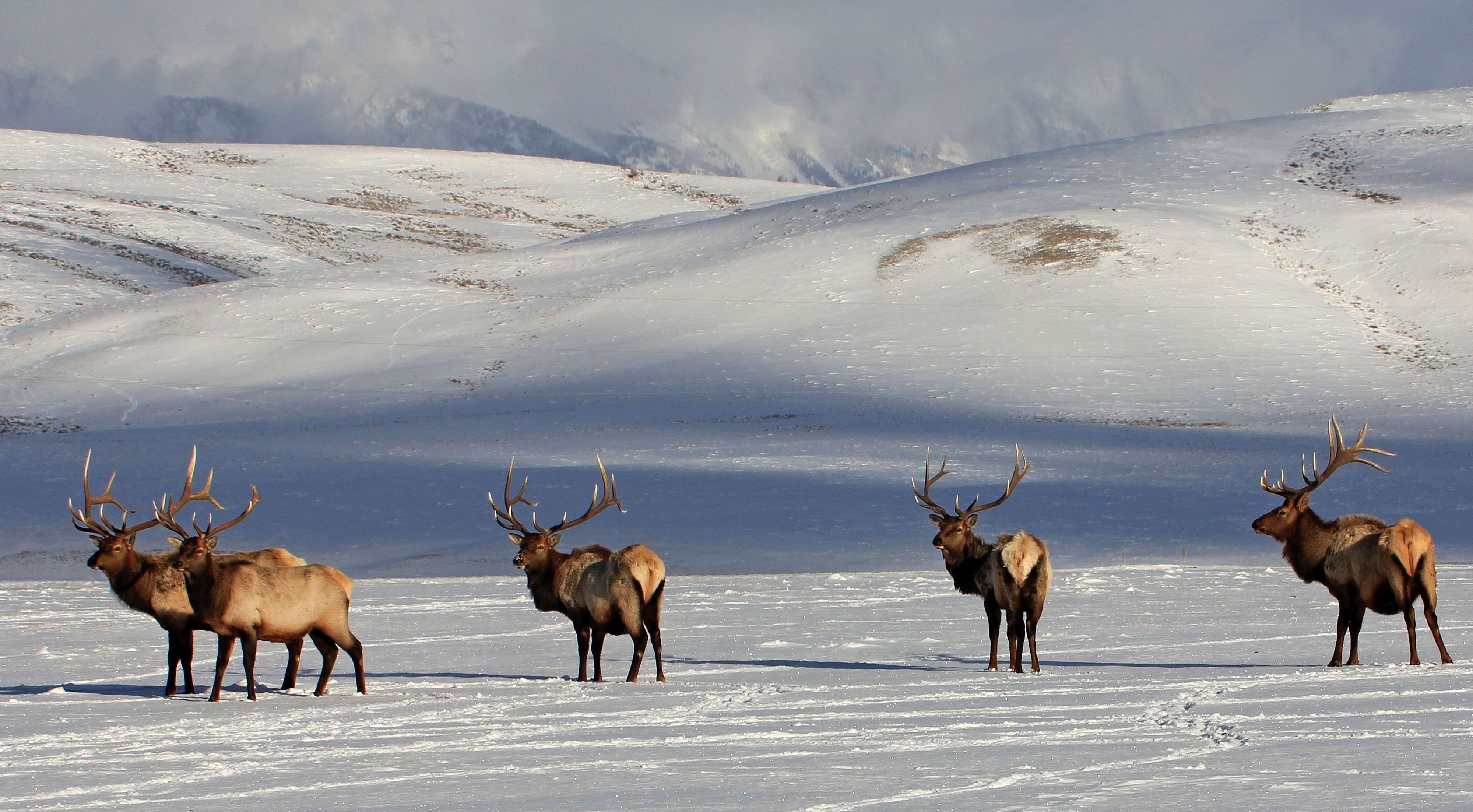 Bull elk scope out the scene at National Elk Refuge in Wyoming. Photo: Tony Hough/USFWS volunteer.
Bull elk scope out the scene at National Elk Refuge in Wyoming. Photo: Tony Hough/USFWS volunteer.
Fact #5: Antlers are made of bone ? ?like the parts of any animal skeleton,? says National Elk Refuge wildlife biologist Eric Cole. All antlered animals have a velvet phase, which helps antler growth by providing a blood supply to the growing bone. Before breeding season, the velvet dries up and the animal rubs the velvet off on vegetation.
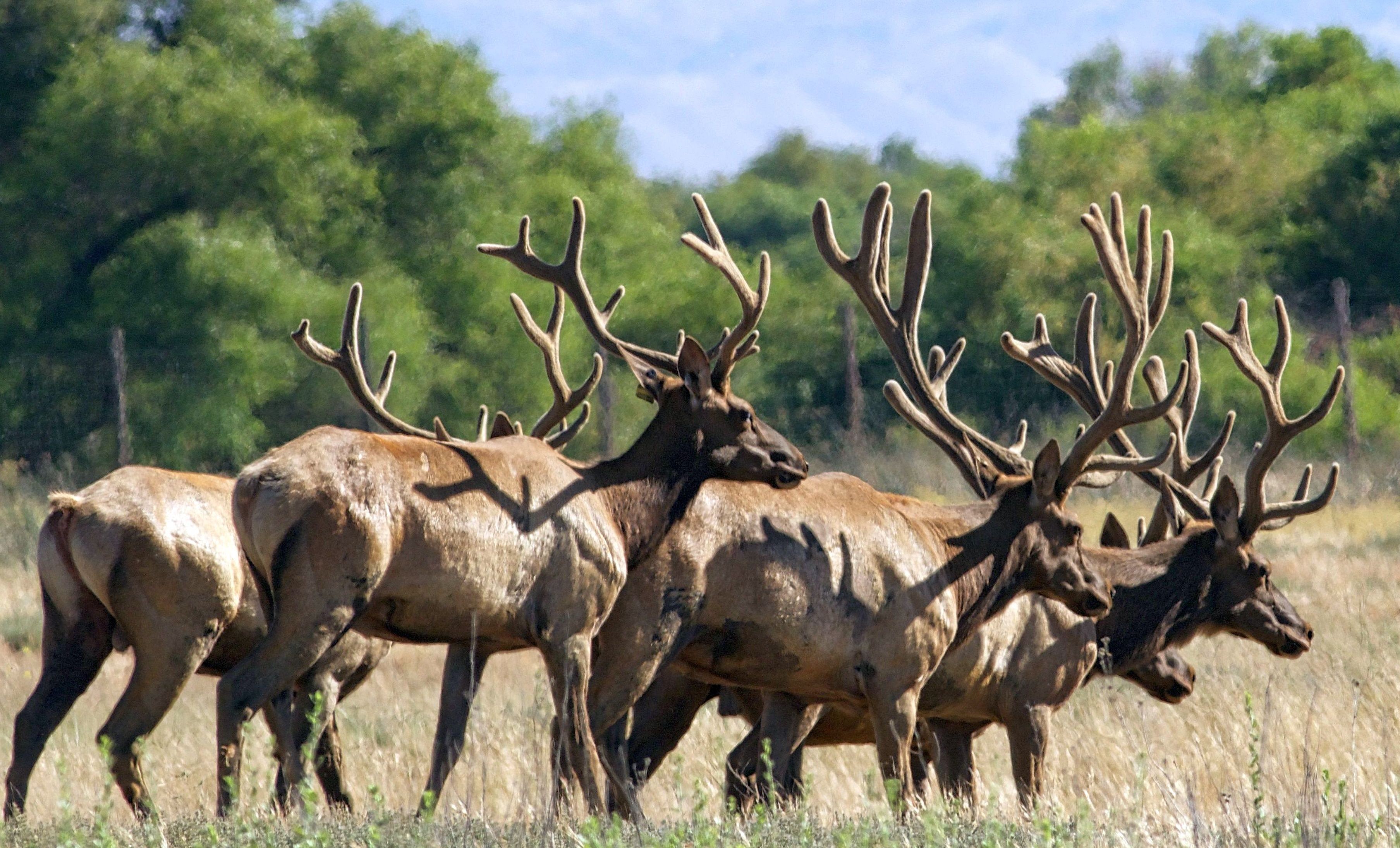 Tule elk in velvet at California?s San Luis National Wildlife Refuge. Photo: Steve Martarano / USFWS.
Tule elk in velvet at California?s San Luis National Wildlife Refuge. Photo: Steve Martarano / USFWS.
Fact #6: Antlers serve various purposes. ?Most biologists agree that antlers evolved to facilitate competition among males for females,? says Cole. ?Secondary uses include defense against predators and asserting dominance ? typically against others of the same species ? for food resources.? Antlers also can be used to scrape or rub trees to advertise dominance, knock down fruit and create wallows (dirt or mud depressions in which animals lie or roll to relax, cool down or suppress insects).
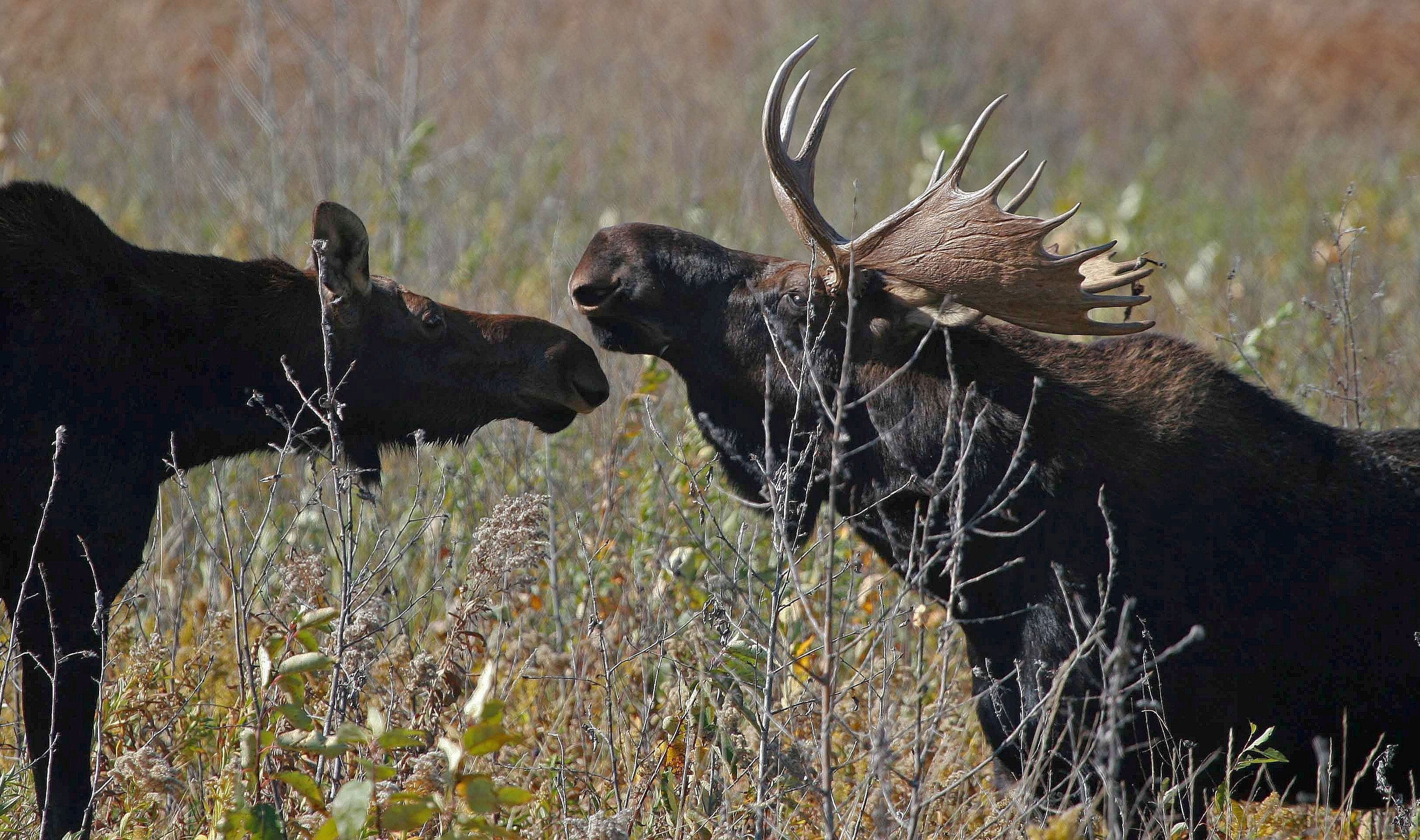 A moose pair at Agassiz National Wildlife Refuge in northern Minnesota. Photo: USFWS.
A moose pair at Agassiz National Wildlife Refuge in northern Minnesota. Photo: USFWS.
Fact #7: Size matters. Antler size is an indication of male health because antlers take a considerable amount of resources to produce and carry. Only healthy males can produce the largest antlers. Elk antlers can grow to seven or eight points each, can have a length and spread of four feet and can weigh 20 pounds each.
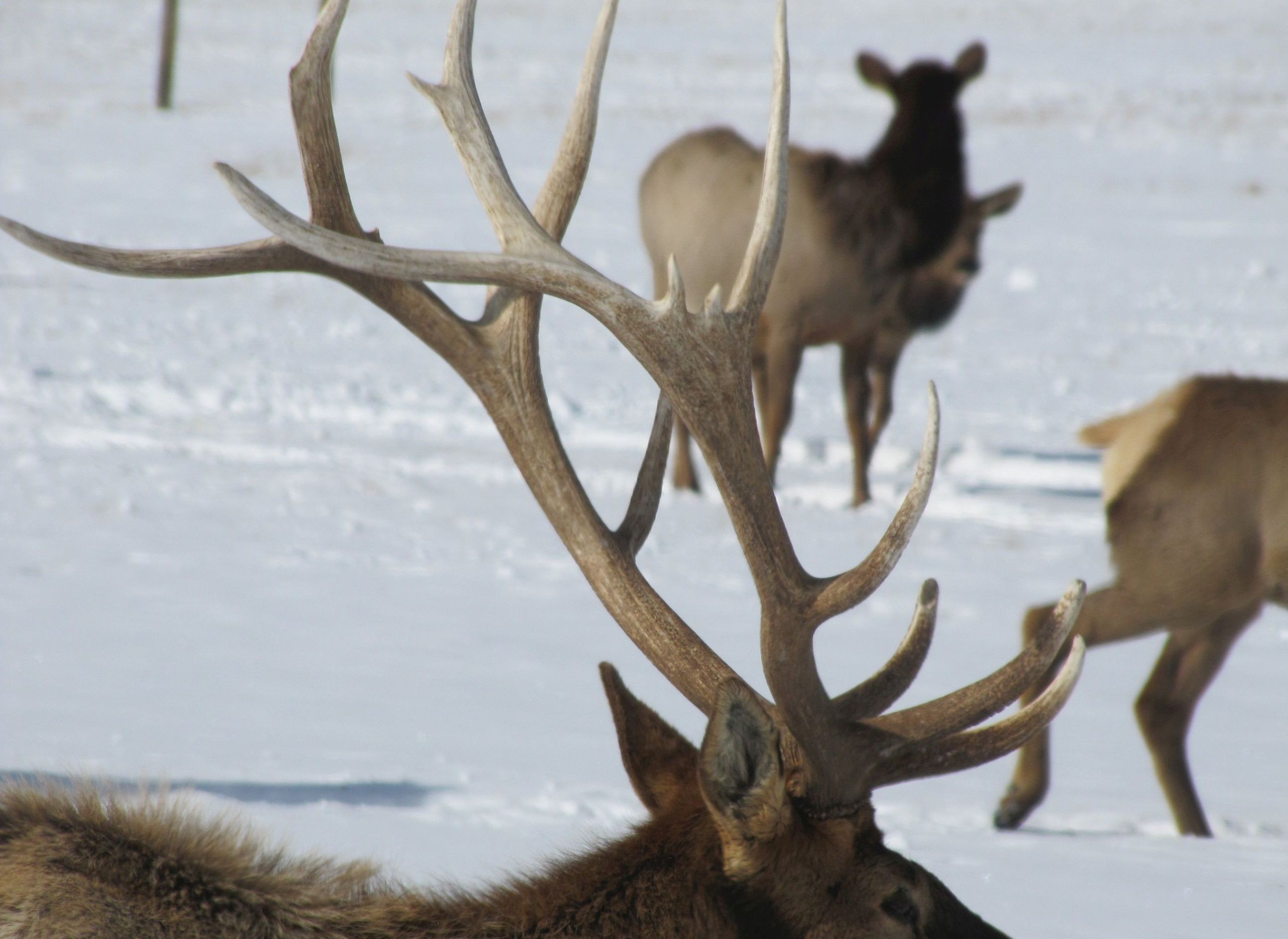 A bull elk at National Elk Refuge. Photo: Lori Iverson / USFWS.
A bull elk at National Elk Refuge. Photo: Lori Iverson / USFWS.
Fact #8: During the annual rut (breeding season), males use antlers to display dominance. Females tend to mate with males that have the largest antlers. Sometimes a male will carry vegetation on his antlers. Biologists believe the male is trying to enhance his size. Bull elk make loud noises ? called bugling ? to attract cows and ward off other bulls. Check out this Tule elk bull bugling at San Luis National Wildlife Refuge (video). For elk, moose and caribou, the rut generally occurs in late summer/early fall. For deer, it?s generally November/December.
 Bull elk sparring at Fort Niobrara National Wildlife Refuge in Nebraska. Photo: Todd Frerichs.
Bull elk sparring at Fort Niobrara National Wildlife Refuge in Nebraska. Photo: Todd Frerichs.
Fact #9: After the rut, elk, moose, caribou and deer shed their antlers. The pedicles ? the bony protrusions from which the antlers grow on the animal?s skull ? often are injured. Once the pedicles are healed, a week or two after shedding, growth of a new set of antlers typically begins.
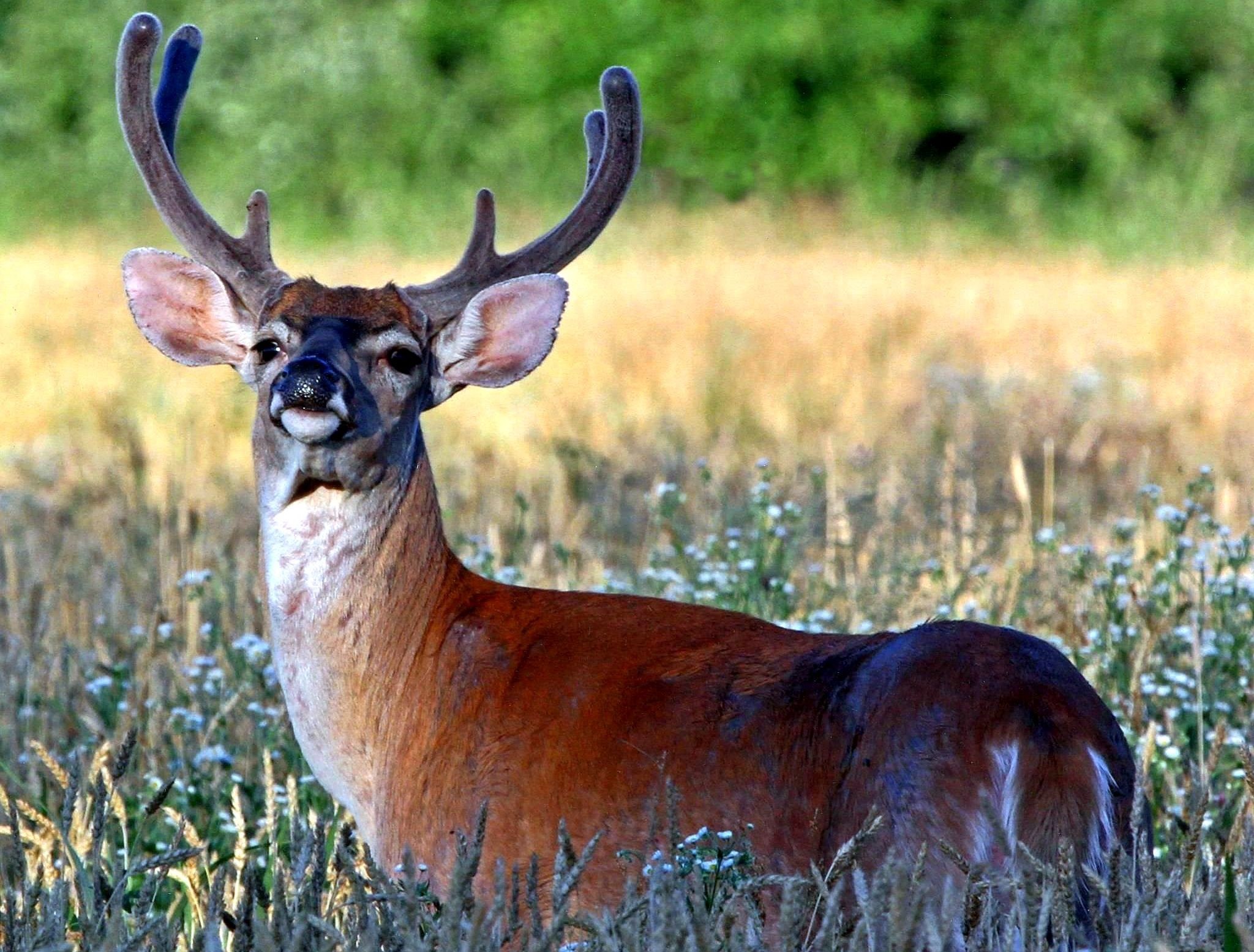 A white-tailed deer in velvet at Crab Orchard National Wildlife Refuge in southern Illinois. Photo: Jim Osborn.
A white-tailed deer in velvet at Crab Orchard National Wildlife Refuge in southern Illinois. Photo: Jim Osborn.
Fact #10: Although a new set of antlers grow each year, an animal doesn?t necessarily grow antlers of similar form each year.
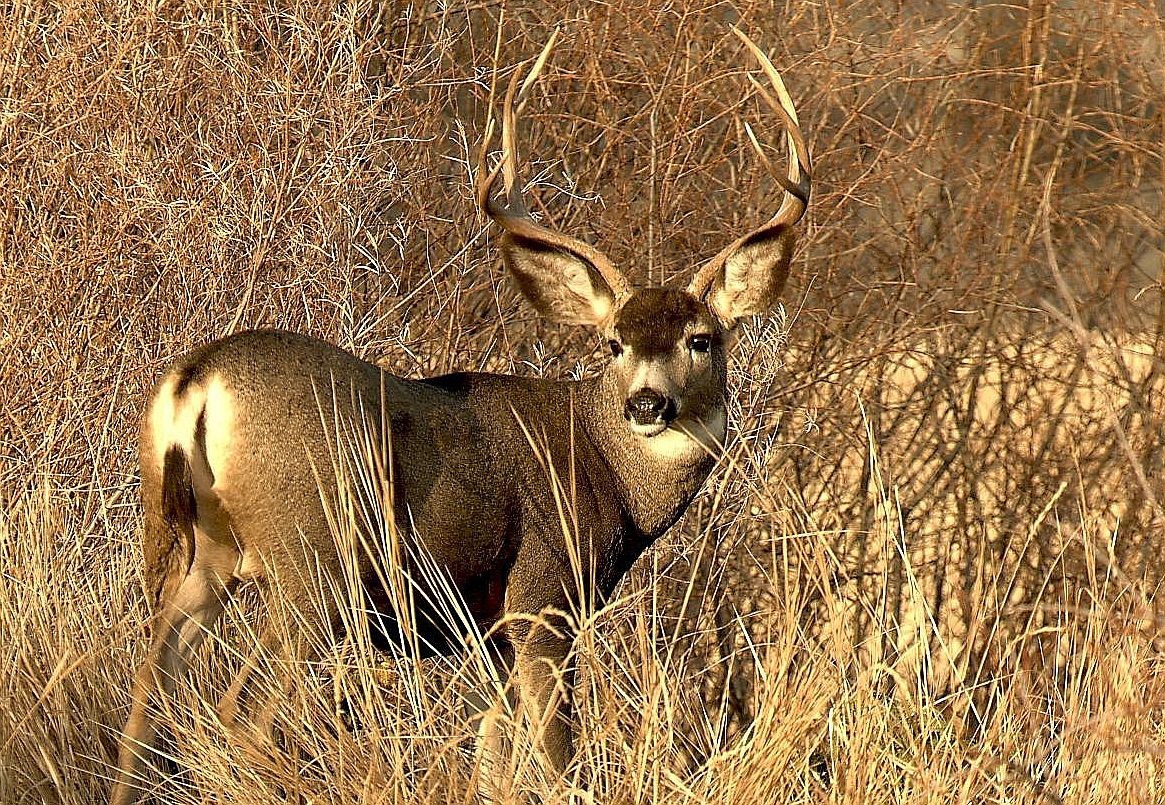 A mule deer buck at Malheur National Wildlife Refuge in Oregon. Photo: Barbara Wheeler.
A mule deer buck at Malheur National Wildlife Refuge in Oregon. Photo: Barbara Wheeler.
Fact #11: Antlers are not horns. The deer (Cervidae) family has antlers. Bison, antelopes, sheep, goats and domestic cattle ? all in the bovine family ? have horns. Antlers are composed of bone. Horns are composed of keratin (same material as hair and fingernails) on the outer portion and live bone on the inner core. Antlers grow from the tip; horns grow from the base.
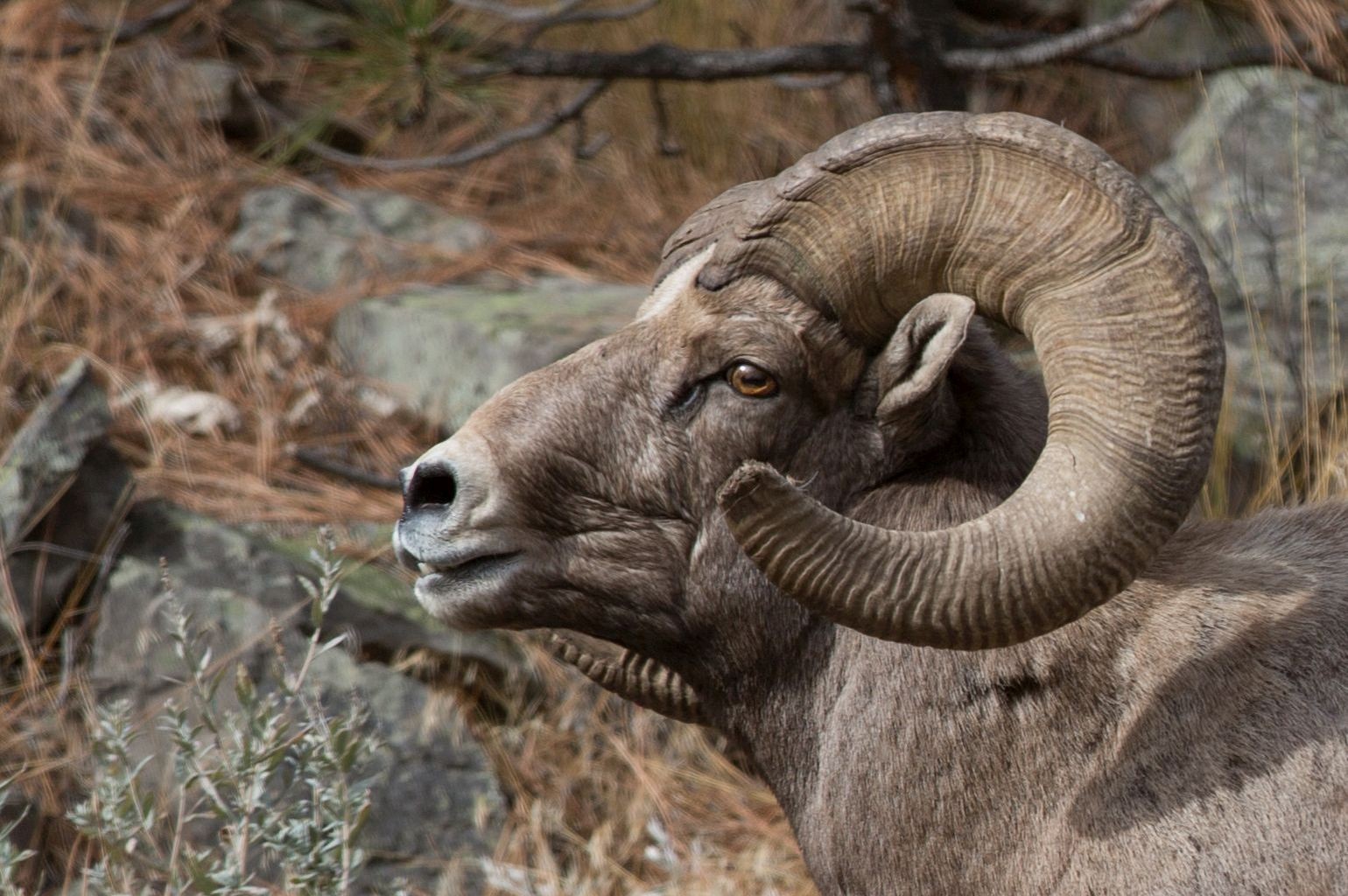 Bighorn sheep have horns, not antlers. This photo is from the National Bison Range in Montana. Photo: Dave Fitzpatrick / USFWS volunteer.
Bighorn sheep have horns, not antlers. This photo is from the National Bison Range in Montana. Photo: Dave Fitzpatrick / USFWS volunteer.
